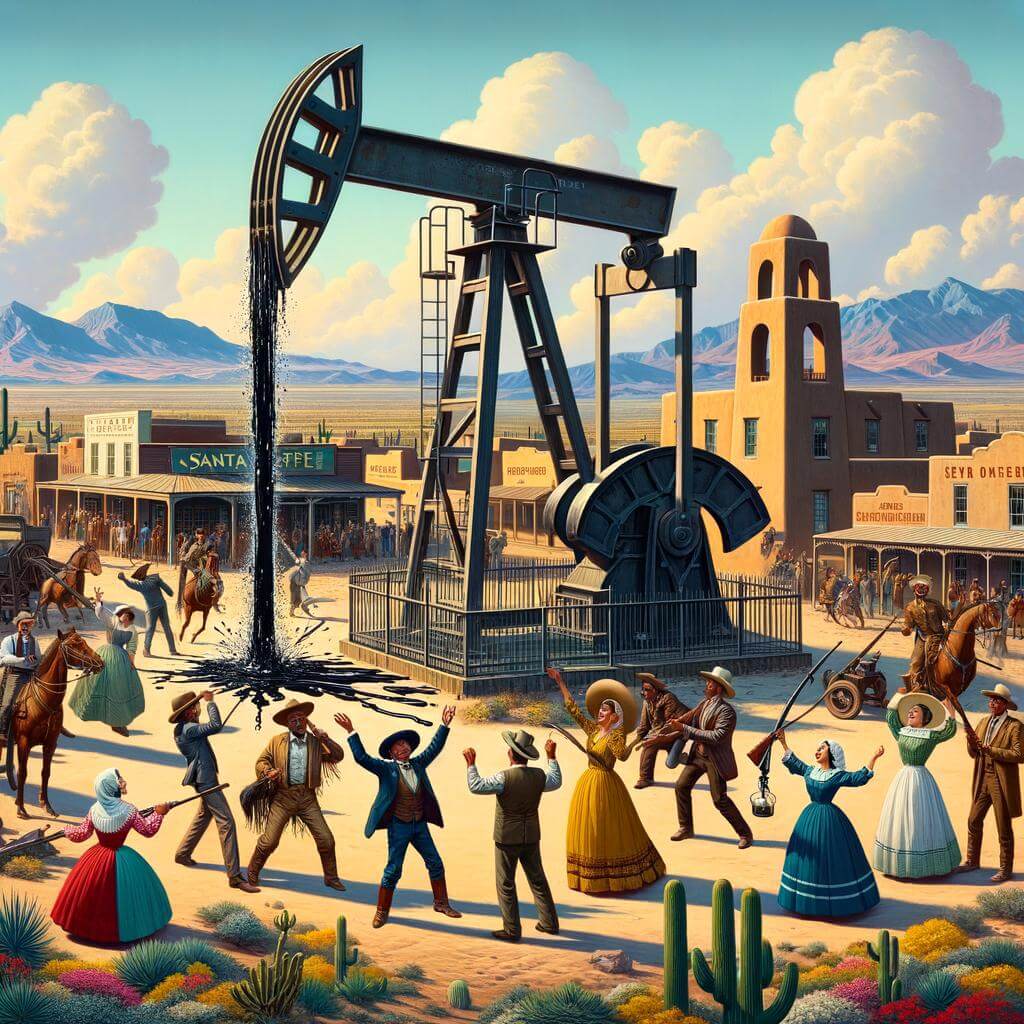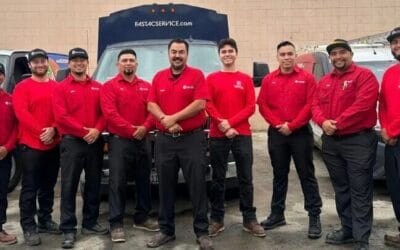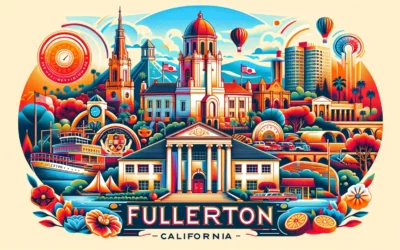Welcome to our comprehensive guide, “Discovering Santa Fe Springs: An In-depth Historical Overview”. Our post aims to enlighten you about the rich and diverse history of Santa Fe Springs, an interesting city located in Los Angeles County, California. This educational and informative blog post is based on expert’s findings and careful research, designed to provide you with useful and authentic facts about the growth and development of Santa Fe Springs through different historical periods. By understanding its history, we can gain a new appreciation for its beautiful landscapes, architectural gems, and the thriving community that calls Santa Fe Springs home. So whether you’re a history buff, a student researching for a project, or a curious traveler planning a future visit, this post is for you. We hope this guide will enrich your knowledge and deepen your understanding of Santa Fe Springs, making your journey into its history both engaging and rewarding.
Exploring the Early Beginnings of Santa Fe Springs
Twined in the intricate weave of Southern California’s rich tapestry is the fascinating tale of Santa Fe Springs. Thought to have initially been inhabited by the ancient Tongva people, evidence suggests they had thriving settlements in Santa Fe Springs over 3000 years ago. This early occupancy laid the foundations of a historical journey characterized by the confluence of cultures, economic shifts, and remarkable reinventions.
The Tongva people, or People of the Earth as they were also known, are believed to have practiced a sustainable and harmonious way of living. They had an intricate understanding of nature and its cycles, which allowed them to develop agricultural practices, building traditional houses – known as Ki - and making products from natural materials. This phase of Santa Fe Springs’ history is marked by a humanized touch on the landscape; the Tongva’s adaptation to and harmony with their natural surroundings was beautifully balanced.
| Time Period | Key Events |
|---|---|
| 1st-8th Century | Early Tongva settlements |
| 8th-16th Century | Tongva cultural developments |
The rich era of Spanish colonization began in the 18th century, sparking a significant shift in the destiny of Santa Fe Springs. The advent of Spanish missionaries brought about new religious, social, and economic systems that transformed the native landscape. Inevitably, this period also caused conflicts with the local populace and molded the town’s history in nuanced ways. The subsequent Mexican period and American era added further layers to the complex tapestry that is Santa Fe Springs today.
- Tongva Era: Began more than 3000 years ago. Key aspects – sustainable living, agricultural development, harmonious coexistence with nature.
- Spanish Era: Sparked religious, social, and economic shifts.
- Mexican Era and American Era: Further contributed to shaping the historical, cultural, and socio-economic complexion of Santa Fe Springs.
The culmination of these historical shifts has led to the vibrant, diverse, and dynamic city that Santa Fe Springs is today. A city proudly wearing its complex history on its sleeve, Santa Fe Springs serves as a remarkable testament to the strength and resilience of the human spirit as it navigates through change. This is a city that truly honours its past while steadily advancing into the future.

Delving into the Rich Native American History
Unearth the dense historical fabric of Santa Fe Springs. With a long history stretching back to over 3,000 years ago, this area was traditionally inhabited by the Tongva Native American tribe. The Tongva thrived in this fertile and resource-rich region, leading relatively sedentary lives. They were sophisticated gatherer-hunters and fishers, deploying an intricate knowledge of local plant and animal life to supplement their diet. Here, they built their communities, honed their rich cultural practices, and governed their societies through complex political structures.
Delve deeper to discover that the Tongva believe in a cosmology that significantly informs their practices, lifestyle, and worldview. One such belief is that of an interconnected universe with every life form bearing intrinsic worth. They thrived by adopting a balanced approach to natural resource utilization. Explore their ingenious methods of food gathering and preparation:
- Acorns: A staple in their diet. After a thorough drying, crushing, and leaching process, acorns were transformed into a flavorful soup or porridge.
- Fish: When the season allowed, streams, rivers, and the sea would yield an abundant supply. Techniques used to catch fish included spearing, netting, and using hook and line.
- Rabbits: Typically captured during communal rabbit drives, rabbits were not only a food source but also provided raw materials for clothes and tools.
| Common Native Plants | Uses |
|---|---|
| Sage | Used for medicine |
| Oak Tree | Extensive use of acorns for food |
| Cattail | Provides fiber for basket making |
Indeed, the life of the Tongva mirrored the seasons, the abundance dictated by nature, and in response, they adapted and made use of what was at hand. It’s a thrilling glimpse into the Native American history that remains integral to the cultural fabric of Santa Fe Springs today.

Understanding the Impact of Spanish Colonization on Santa Fe Springs
When it comes to the history of Santa Fe Springs, the impact of Spanish colonization cannot be overlooked. It was during the 16th century, when Spanish Conquistadores like Juan Rodríguez Cabrillo brought the flag of Spain to the coasts of California, that the face of the region began to change. From this time on, the native Tongva community found themselves sharing their area with a foreign presence.
In 1769, the Spanish established the first of California’s missions, igniting a remarkable cultural exchange. Yet, with profound impacts on the native people, the land, and the region’s economy. By the early 19th century, Santa Fe Springs had been transformed into a Spanish rancho, known as Rancho Los Nietos. Characteristics of the Spanish era remain symbolic in Santa Fe Springs, like:
- The hacienda style architecture, inspired by Spanish colonial buildings
- The lush vineyards and olive groves, reflecting Spanish agricultural practices
- The established Catholic churches, a testament to Spanish missionary work
These elements blend with the native landscape and traditions, forming a uniquely Californian culture. However, Spanish colonization also brought about challenges and changes. The native Tongva community was severely impacted, with population declines and cultural disruption. The landscape too underwent massive transformations due to farming and ranching.
| Era | Impact |
|---|---|
| 16th Century | Arrival of Spanish Conquistadores |
| 18th Century | Establishment of missions |
| 19th Century | Transformation to rancho culture |
Despite these dramatic shifts, the spirit of Santa Fe Springs’ past remains. In its streets and buildings, in the fields and groves; one can still trace the indelible marks of Spanish influence and the enduring resilience of the native cultures.

The Oil Discovery: A Turning Point in Santa Fe Sprung’s History
In the early 20th century, the quiet farming community of Santa Fe Springs was known for growing barley and citrus fruit. That all changed in 1921, when oil was discovered in the town. This pivotal moment not only transformed the local economy, but also shaped Santa Fe Springs’s future considerably. The oil discovery was like a gold rush, inspiring a sense of excitement and anticipation in every resident’s heart. In no time, what was once a peaceful agricultural town turned into a bustling epicenter of oil production.
The oil discovery was made on a property belonging to Union Oil Company of California. The company, which had been drilling in the area for some time without any success, struck black gold in 1921 and the rest is history. The oil field, known as the Santa Fe Springs Oil Field, was one of the most productive in the world. At its peak in 1923, it produced an astonishing 345,000 barrels of oil per day. The impact of this discovery on the town was tremendous. It lead to a surge in employment, attracting thousands of job-seekers from across the country:
| Year | Population |
|---|---|
| 1920 | 1,476 |
| 1930 | 4,304 |
| 1940 | 7,567 |
- New Schools: The influx of people necessitated the establishment of new educational institutions. Santa Fe Springs promptly responded with the opening of multiple schools for children of the burgeoning population.
- Rapid Development: Once a landscape of citrus groves and barley fields was swiftly transformed into a place dotted with drilling rigs and oil derricks.
At the heart of Santa Fe Springs’s transformation was the oil discovery – a turning point that redefined the town and its history forever.
Modern Santa Fe Springs: Transformation and Growth
In recent times, Santa Fe Springs has undergone a remarkable evolution brimming with growth and development. Formerly known for its oil production industry during the late 19th and early 20th century, this vibrant city has steadily diversified to include sectors such as manufacturing, technology, and knowledge-based services. The transformation also features a magnificent shift from predominantly industrial landscapes to include beautiful public parks, modern architectures, extensive pedestrian pathways, and a thriving mix of retail outlets.
Santa Fe Springs embraces its historical past while moving forward with grand modernization initiatives. Some of these include the Heritage Arts Advisory Committee that sanctions public access to art and the stunning Santa Fe Springs City Library which houses over 93,000 volumes.
- Remodeled storefronts
- State of the art road networks
- Revamped public spaces
- Growth of small and medium enterprise sector
- Emphasis on sustainability and green practices
The industrial sector has been modernized, the residential areas have been skillfully upgraded, and the overall quality of life has been substantially improved. The city has matured into a regional hub, attracting both businesses and families with its balanced growth and development opportunities.
| Attributes | Current Details |
|---|---|
| Population | Approximately 18,000 |
| Industrial Sector | Manufacturing, Technology, Services |
| Key Attractions | Heritage Park, Civic Theater, Art Center |
| Public Facilities | Modern Library, Parks, Activity Centers |
The transformation of Santa Fe Springs hasn’t been without its challenges. However, the city has developed an effective comprehensive plan to address growth constraints while ensuring future sustainability and prosperity. Santa Fe Springs is a testament to what a city can achieve through community-oriented planning, sustainable practices, and a visionary approach to growth and development.
Sights to See: Important Historical Landmarks and Recommendations
Situated in the Southeastern nook of Los Angeles County is a hidden historical gem, the city of Santa Fe Springs. Bursting with rich history that dates from the Tongva Native American tribe to the mid-20th-century oil boom, the city is a lure for ardent history buffs yearning for a glimpse into the past. Among its not-to-be-missed historical landmarks is the Craig Ranch, a 19th-century ranch featuring an original barn, windmill, and ranch house that give an authentic picture of farm life in yesteryears. An additional treat is a visit to the Heritage Park which hosts the Hawk Native American Museum with fascinating displays of local Tongva and other Native American artifacts and culture.
| Landmark | Description |
|---|---|
| Craig Ranch | A 19th-century ranch complete with original barn, windmill, and ranch house illustrating California’s agricultural past. |
| Heritage Park | Encompasses an authentic railroad depot, a Victorian home, and the Hawk Native American Museum showcasing the city’s rich and diverse history. |
| Clarke Estate | Sophisticated Spanish Colonial Revival architecture, built in the 1920s by the celebrated mogul Clarke during the oil boom era. |
In a class of its own, the majestic Clarke Estate built by mogul Chauncey Clarke in the roaring 1920s stands as a testament of the city’s oil boom era. With its elegance and grandeur, the mansion showcases captivating Spanish Colonial Revival architecture, evoking a bygone era of opulence and grace. For nature enthusiasts, the Wildlife Sanctuary established on a reclaimed landfill, doubles as an unexpected environmental education facility. An absolute must-visit, the sanctuary offers a vivid appreciation of the area’s unique and dramatic natural history. Don’t miss out on these historical treats in Santa Fe Springs, certain to give you an enriching tour of California’s past.
Final Thoughts
In conclusion, Santa Fe Springs offers an intriguing fusion of a rich historical heritage interwoven with modern growth and development. Embarking on this journey of exploration into the city’s history has been as enlightening as it has been exciting, painting vivid pictures of the past and providing insights into the city’s present circumstance. As we have seen, every street, building, and artifact in Santa Fe Springs has a story to tell – stories that are not only educative but also entertaining.
Just like this city, this deep dive into Santa Fe Springs is full of revelations, interesting stories, and lessons that provide more than just context—they offer an understanding of what shaped this city into what it is today. It is our hope that this historical overview not only educates you about Santa Fe Springs’ past but also inspires you to explore more about this remarkable city.
Ultimately, Santa Fe Springs exemplifies the resilience of a city that has continued to evolve through several transformations, reveling in its historical pride while embracing the promises of the future. As much as we’ve discussed, there remains even more history to be discovered in Santa Fe Springs, making each visit to the city a new experience. Don’t just read about it, experience Santa Fe Springs for yourself, and continue your own journey of historical discovery.



